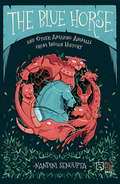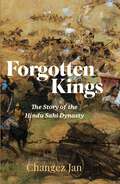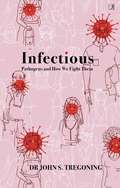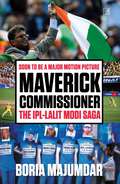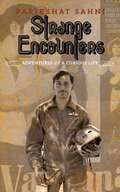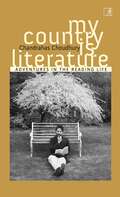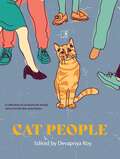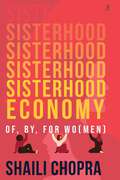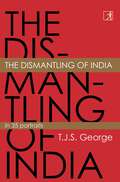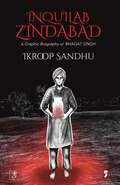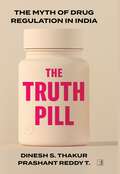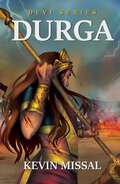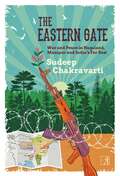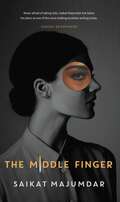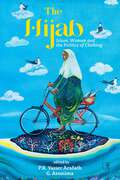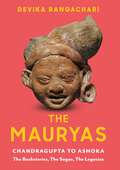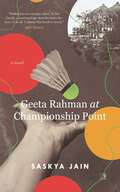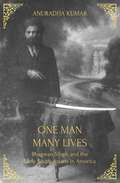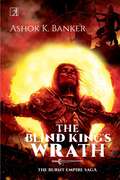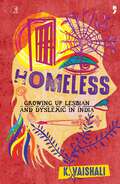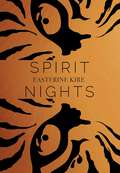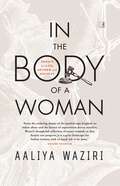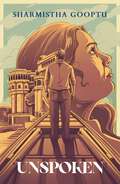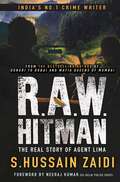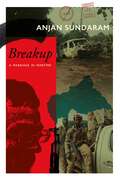- Table View
- List View
The Blue Horse and Other Amazing Animals from Indian History
by Nandini SenguptaIt’s not just humans who make history, you know. So move over, chroniclers and historians. For centuries, we’ve been ignored, forgotten, occasionally footnoted (thanks a lot). It’s time we took centre stage. Strongest allies, faithful friends…we’ll even go so far as to say we were the soulmates of great kings and queens, princes and princesses, warriors and administrators. From saving their lives (while putting ours at risk) and leading them to victory in war to being a constant source of joy and love, we’ve done it all. Take a tour of Akbar’s dazzling court with his favourite cheetah, Samand Manik. Learn about the heroic battle of Haldighati – straight from Chetak’s mouth. Find out what Chhatrapati Shivaji was really like – from his dog, Waghya. Full of daring exploits, epic romances and heart-wrenching moments, these underdog (oh calm down, Bucephalus, it’s just a term!) stories are unlike anything you’ve ever read before!
Forgotten Kings: The Story of the Hindu Sahi Dynasty
by Changez Jan&‘This Hindu Sahiya dynasty is now extinct, and of the whole house there is no longer the slightest remnant in existence. We must say that, in all their grandeur, they never slackened in the ardent desire of doing that which is good and right, that they were men of noble sentiment and noble bearing.&’People and their acts of bravery are often lost to the annals of history. But what of mighty lineages? Generations of kings and the lands and people they fought for? What of kings who fought against their own people?The Hindu Sahi kings, to whom honour and pride were more important than their own survival, fought a near 150 year rear-guard action as they continued to be pushed east from Kabul, their original homeland, changing their capitals and defending themselves from their own countrymen.The last of their house had the misfortune of confronting the juggernaut that was Sultan Mahmud of Ghazni. Where obedience to the Sultan would have allowed their house to endure, their honour would have them confront him over and over.But who were they?This book tries to piece together their story from the limited sources that are available from an age where historical sources were few and, in the case of the Sahis, mostly from the point of view of their enemies.This is the story of a dynasty that represented a resurgent Hindu faith in a land that was long dominated by Buddhism but also coincided with the arrival of the Muslims.
Infectious: Pathogens and How We Fight Them
by Dr John S. Tregoning&‘This book catapults us to the frontier of the vital science of infections and immune responses. Tregoning is a perfect guide, writing with wit and intelligence about a subject which surely everyone feels the importance of now. Brilliant and right on the zeitgeist.&’Daniel M. Davis, author of The Beautiful Cure and The Secret Body &‘Packed with fascinating facts, intriguing anecdotes and more than a few Dad jokes, Infectious is an expertly guided, pacey tour through the world of all the stuff that&’s trying to kill us and how our immune systems and human ingenuity are fighting back.&’Dr Kat Arney, science communicator and author of Rebel Cell: Cancer, Evolution and the Science of Life Nature wants you dead. Not just you, but your children and everyone you have ever met and everyone they have ever met; in fact, everyone. It wants you to cough and sneeze and poop yourself into an early grave. It wants your blood vessels to burst and pustules to explode all over your body. And – until recently – it was really good at doing this… COVID-19 may be only the first of many modern pandemics. The subject of infection and how to fight it grows more urgent every day. How do pathogens cause disease? And what tools can we give our bodies to do battle? Dr John S. Tregoning has dedicated his career to answering these questions. Infectious uncovers fascinating success stories in immunology and virology, making this book not only a vital overview of infection, but also a hopeful story of ongoing human ingenuity.
Maverick Commissioner
by Boria MajumdarThe Indian Premier League. Its mere mention forces cricket fans across the world to sit up and take notice. World cricket&’s most valued property has only grown stronger with time. Conceived and implemented by Lalit Modi in 2008, the IPL has forever revolutionised the way cricket is marketed and run globally. Modi had built and orchestrated the tournament by his own rules and after the stupendous success of the IPL, the same rules were questioned by the administration. Modi was subsequently banned for life.How and why did it happen? What went on behind the scenes? How did it all start to go wrong between Modi and the others? Are there secrets that will never come out? This book is all about everything you never got to know. Each fact corroborated by multiple sources who were in the thick of things, Maverick Commissioner is a riveting account of the IPL and the functioning of its founder, Lalit Kumar Modi. Did Modi have a long telephone conversation with a BCCI top brass the day he left India for good? What really was discussed? Is Lalit Modi the absent present for the IPL and Indian cricket?Soon to be made into a film by Vibri Motion Pictures, Maverick Commissioner documents things exactly as they happened. No holds barred and no questions left out. It doesn&’t judge Lalit Modi. All it does is narrate his story. Who is the real Lalit Modi? Let the readers decide.
Strange Encounters: Adventures of a Curious Life
by Parikshat SahniDrawing its wisdom from Hindu, Judaic and Islamic philosophies, this is the multicultural, multifaceted saga of Parikshat Sahni's journey from being a film student in Soviet Russia to surrendering Stanislavski for Indian cinema. Strange Encounters is a prismatic collection of travel portraits, impressions and life lessons that Parikshat Sahni has accumulated in his itinerant life moving within the golden autumns of Moscow to the tune of Tchaikovsky, returning to Mumbai and his roots, entering Bollywood, and finding fame. Sahni chronicles stories from a life whose pendulum swings wildly from the humorous to the utterly horrifying. He confronts his thanatophobia on film sets and his atheism on an ill-prepared trek to Amarnath; he gives us drinking lessons with screenwriter friends and a profound insight into the state of culture wars in present-day Kashmir; he recalls the thrill of young love in Russia and its attendant treacheries of the heart, as well as a study of Pakistan, a history of India as the land of many, and a look at the current political discourse through the eyes of a refugee.
My Country Is Literature: Adventures in the Reading Life
by Chandrahas Choudhury'A book is only one text, but it is many books. It is a different book for each of its readers. My Anna Karenina is not your Anna Karenina; your A House for Mr Biswas is not the one on my shelf. When we think of a favourite book, we recall not only the shape of the story, the characters who touched our hearts, the rhythm and texture of the sentences. We recall our own circumstances when we read it: where we bought it (and for how much), what kind of joy or solace it provided, how scenes from the story began to intermingle with scenes from our life, how it roused us to anger or indignation or allowed us to make our peace with some great private discord. This is the second life of the book: its life in our life.' In his early twenties, the novelist Chandrahas Choudhury found himself in the position of most young people who want to write: impractical, hard-up, ill at ease in the world. Like most people who love to read, his most radiant hours were inside the pages of a book. Seeking to combine his love of writing with his love of reading, he became an adept of a trade that is mainly transacted lying down—that is, he became a book reviewer.Pleasure, independence, aesthetic rapture, even a modest livelihood: all these were the rewards of being a worker bee of literature, ingesting the output of the publishers of the world in great quantities and trying to explain in the pages of newspapers and magazines exactly what makes a book leave a mark on the soul. Even as Choudhury's own novels began to be published, he continued to write about other writers' books: his contemporaries at home and abroad, the great Indian writers of the past, the relationship of the reading life —in particular, the novel—to selfhood and democracy, all the ways in which literature sings the truths of the human heart.My Country Is Literature brings together the best of his literary criticism: a long train of perceptive essays on writers as diverse as VS Naipaul and Orhan Pamuk, Gandhi and Nehru, Bibhutibhushan Bandyopadhyay and Jhumpa Lahiri. The book also contains an introductory essay describing Choudhury's book-saturated years as a young writer in Mumbai, the joys and sorrows and stratagems of the book reviewer's trade, and the ways in which literature is made as much by readers as by writers.Delightfully punctuated with 15 portraits of writers by the artist Golak Khandual, My Country Is Literature is essential reading for everyone who believes that books are the most beautiful things in life.
Cat People
by Devapriya RoyIn Karachi, a writer house-sits for her father and his cat, while keeping track of his - the cat&’s - list of obsessions: ironed white sheets, kheer, KFC fries, warm custard, finely chopped sausages, and the flaky tops of chicken patties. In San Francisco, a couple adopt a cat, without anticipating what it will do to their relationship. In Noida, a cat and two dogs line up peacefully every morning for their daily dose of vitamin syrup. In Bombay, a lyricist and screenwriter roots through the litter tray first thing in the morning, to investigate if his cat&’s UTI is better. In wintry London, a young millennial wonders if she is actually a cat.Capturing the many moods of felines and their humans, in many forms and voices, Cat People, is a timely celebration of the most memed creature today: the cat. This collection of short stories, personal essays, lists, original art and photographs is are a treat, not just for cat lovers everywhere, but for all who love a story well-told – and, on occasion, a theory well-spun.
Sisterhood Economy: Of, By, For Wo(men)
by Shaili Chopra'Shaili touches upon the most relevant issues of our times which most often are closed door conversations in a highly readable, heroic and engaging way... bringing a powerful, authentic and honest lens to women and the economy.' MASABA GUPTA 'A powerful book with many anecdotes of everyday women encountering and defeating the patriarchy, Sisterhood Economy will fill you with optimism and hope.' FAYE D'SOUZA &‘Shaili Chopra has a chatty and engrossing style of writing ... Mainstreaming of sisterhood is not just about the economy, it is also about the society India desires.&’ BIBEK DEBROY &‘Sisterhood Economy by Shaili Chopra, is important, apt and timely. It brings to you real-life stories of the barriers women face as contributors to the economy... we are the real wealth creators and yet very little recognition of the existing barriers are discussed or resolved.&’ PRIYANKA CHATURVEDI &‘When women rise, they lift up society. Sisterhood Economy is a deeply reflective book that explores and narrates the power of equitable ground for women.&’ FALGUNI NAYAR The new Indian woman is dreaming big and seeking change. Wanting to break from the triptych of bechari, badass or bitch, women are talking of being stronger together. What can a ground-up sisterhood of determined women mean for a country like ours and just how can it unleash and harness the dormant economic potential of half the country&’s population? This book is a power-packed insight into the lives of the women of the world&’s largest democracy who are struggling every single day to get their voice heard, presence felt, and make their economics matter. Shaili Chopra puts a fresh lens to what&’s powering or stopping women to seize the opportunity ahead of them, by talking to more than five hundred different women (and men), across classes, castes, cities, ages, ambitions and desires. Can the mother-in-law trigger change in a country&’s GDP? What are beauty parlour economics? Are women claiming independence and can intimacy drive better economic outcomes? Why are single women rocking it? Sisterhood Economy makes a bold, empathetic, and collective call for women to believe in their transformative abilities and put themselves first. Wrapped in emotional anecdotes and stories, this book is deeply authentic and essential reading for anyone looking to understand women beyond statistics. India could do a lot better if only it treated its women better. How difficult can that be?
The Dismantling of India: In 35 Portraits
by TJS GeorgeIn October 1947, two months after Independence, TJS George arrived in Bombay. He was nineteen years old, with a degree in English Literature. He sent out job applications––to the Air Force and to the city's English-language newspapers. Only one organization cared to reply, The Free Press Journal. The editor was known to hire anyone who asked for a job, but most new hires were sacked in a fortnight. George was put on the news desk as a sub-editor and eventually became an assistant editor. In Patna, as editor of The Searchlight, he was arrested by the chief minister for sedition. He spent three weeks in Hazaribagh Central Jail. In Hong Kong, he worked for the Far Eastern Economic Review as regional editor; in New York he was a writer for the United Nations population division; and, back in Hong Kong, in 1975, he founded Asiaweek. Six years later, he returned to India and settled in Bangalore. He began a column for Indian Express that ran without a break for twenty-five years, until 2022. His seventy-five years of journalism, concurrent with India's development as an independent nation, make for a unique understanding of events and personalities. Acclaimed for his widely historical, pan-Asian vision, George brings this far-flung experience to a compulsively readable new book, The Dismantling of India. It is the story of India told in 35 concise biographies, beginning with Jamsetji Tata and ending with Narendra Modi.
Inquilab Zindabad: A Graphic Biography of Bhagat SIngh
by Ikroop SandhuFar from the gun-toting, swaggering young man represented in pop culture, Bhagat Singh was a fearless student leader who spent his time reading, writing, debating, strategising and executing plans while working alongside his comrades. Detailing the life of a national icon, Inquilab Zindabad maps Bhagat Singh&’s journey toward revolutionising the Indian freedom struggle and the people and events that influenced this quest.While Inquilab Zindabad sheds light on his family members, friends, comrades and secret benefactors, excerpts from Bhagat Singh&’s revolutionary writings on religion, caste and freedom are also present throughout the book. Informing the reader of his astute observations on politics and revolutionary life, the lessons from his life and writings are more relevant today than ever before.
The Truth Pill: The Myth of Drug Regulation in India
by Dinesh Singh Thakur Prashant Reddy ThikkavarapuSince 2004, when the fraud at Ranbaxy, the largest Indian pharmaceutical company at the time first came to light, the Indian pharmaceutical industry and clinical research organizations have been rocked by a series of scandals after investigations by American and European drug regulators. While the West has responded to concerns about quality of &“Made in India&” medicine by blocking exports from many Indian pharmaceutical companies, the Indian government responded not with regulatory reform but conspiracy theories about &“vested interests&” working against India. More worryingly, the Indian state has also turned a blind eye to a far more serious quality crisis in its domestic pharmaceutical market. At times, these quality issues manifest themselves in the deaths of Indian citizens as happened in early 2020 when 11 children died in Jammu because of adulterated cough syrup. On other occasions, a dodgy drug approval process has led to the Indian regulator approving sales of drugs that have never been approved by regulators in the developed markets. The result is not just poor health outcomes but outsize profits for pharmaceutical companies manufacturing medicines that have never been validated through scientifically rigorous clinical trials for therapeutic evidence. These twin crises, in both the domestic and export markets, is because India has either outdated regulations or no regulations in some areas. Even the outdated regulations are enforced with kids gloves by drug inspectors and judicial magistrates who are ready to forgive even those whose drugs are found to contain barely any active ingredient or dangerously high levels of bacterial endotoxins. In a race for growth of the pharmaceutical industry, the Indian state has sacrificed scientific rigour and ignored the basic principles of public health. Given India&’s position as the pharmacy of the developing world, the failure of the Indian state is a problem for not just India but most of the developing world. This timely, important and compelling book based on deep research, questions and analyzes the actions of the institutions that are responsible for the safety and efficacy of the Indian drug supply in the context of the historical evolution of the Drugs Act 1940 from pre-Independence India to the present day. The future of Indian public health lies in responding to the issues raised in this book.
Devi Series Durga
by Kevin MissalOne king. A group of incorrigible women. Nine nights. The demon-king, Mahisha, rules Jambudvipa with an iron fist. He wears the horns of a buffalo and has the will of a bull. With allies far and wide, his kingdom—usurped from the Aryas—is prosperous. All seems well. But Jambudvipa&’s underbelly rots. Teeming with crime, sin, and greed, the city and its people are not what they seem. Most of all, Mahisha himself. With his iron fist comes immense cruelty, horrific violence… He must be stopped. A girl wronged never forgets. Especially one made to witness her parents&’ murder. And revenge, cold and sweet, will be taken. But Durga&’s fight is far greater. And she needs allies. Luckily for her, women across professions are willing to fight the fight—a princess&’ companion, a maid, a mercenary, a pirate. Alongside her. For her. For themselves. And they have nine nights. For men and women in this ruthless world, salvation lies in this plan.
The Eastern Gate: War and Peace in Nagaland, Manipur and India's Far East
by Sudeep ChakravartiTraders, Pushers, Soldiers, Spies.A pivot for India&’s Act-East policy. The gateway to a future of immense possibilities from hydrocarbons to regional trade over land and water that could create a new Silk Route. A bulwark against China. A cradle of climate change dynamics and migration. &‘Northeast&’ India, the appellation with which India&’s far-east is known, is all this and more.Alongside hope and aspiration, it is also home to immense ethnic and communal tension, and a decades-old Naga conflict and the high-profile peace process that involves four gateway states—Nagaland, Manipur, Arunachal Pradesh and Assam—and several million people. It&’s among the most militarized zones in the world. It&’s a playground of corruption and engineered violence. Only real peace, and calm in both Myanmar and Bangladesh, will unlock this Eastern gate.A keen observer and frequent chronicler of the region, Sudeep Chakravarti has for several years offered exclusive insights into the Machiavellian—Chanakyan—world of the Naga and other conflicts and various attempts to resolve these. He now melds the skills of a journalist, analyst, historian and ethnographer to offer inside stories and a ringside view to the tortuous, no-holds-barred attempts at resolving conflict.Employing a &‘dispatches&’ style of storytelling, and interviews with rebel leaders, politicians, bureaucrats, policymakers, security specialists and operatives, gunrunners, &‘narcos&’, peace negotiators and community leaders, Chakravarti&’s narrative provides a definitive guide to the transition from war to peace, even as he keeps a firm gaze on the future. The Eastern Gate is a tour de force that captures this story of our times.
The Middle Finger
by Saikat MajumdarNever afraid of taking risks, Saikat Majumdar has taken his place as one the most striking novelists writing today.– SHASHI DESHPANDE In prose of spare elegance and understated precision, Saikat Majumdar explores an ethical conflict around mentorship, as well as a welter of questions around creative compromise, cultural privilege and entitlement, including the insidious pressures on poets to be &‘snarky and snappy&’. Here is a storyteller whose language is writerly yet beautifully unmannered, supple enough to combine irony with gentleness, finely-modulated observation with axiomatic ease. – ARUNDHATHI SUBRAMANIUM A novel of love and friendship, pleasure, pain and jealousy. – R. RAJ RAOWhat are the ethical boundaries of friendship and intimacy between a student and a teacher? Megha, a young writing lecturer in New Jersey struggles to finish her thesis and find full-time employment even as she begins to find underground fame as a poet. Restless and disenchanted, she lets her professor and friends persuade her to take up a position at a new university in Delhi. Moving continents, resettling in the city she knew as a teenager, she discovers that the university is an island of wealth and privilege, and that her mandate is to teach and train some of the key members of India&’s ruling class. But her life as a teacher is disrupted as she makes a new friend who unsettles her and asks for unexpected support. In sharp and lyrical prose, The Middle Finger tells the story of a poet grappling with questions about mentorship and belonging, disrupting boundaries set by society and the hierarchies hidden in the world of education.
The Hijab: Islam, Women and the Politics of Clothing
by PK Yasser Arafath G ArunimaHistorically, in India, we have instances of both unveiling and veiling that have been initiated by Indian Muslim women. The early 20th century saw many Muslim women joining the national movement, giving up veiling, feeling this was the only way for them to change their own, and the country's, future. Almost a hundred years later, the hijab continues to be a bone of contention in India, though in very different ways. On one hand, the rape threats that hijabi/non-hijabi women frequently encounter in the cyber world reflect the extreme desperation of the aggravated Hindutva millennials who are made to believe that unveiling Muslim women is their right while a large segment of Indian Muslim women are increasingly convinced that wearing the hijab is their constitutional prerogative. This collection of essays, primarily from India but also with a couple from Bangladesh and Iran, complicates the relationship between Muslim women and the hijab. Moving away from predictable interpretations that see the hijab merely as an instrument of Muslim women&’s oppression, the essays here, from a variety of perspectives including historical, ethnographic, and political, demonstrate that not only have Muslim women covered/ or uncovered their heads for different reasons, but the head cloth itself has had different forms depending on the region or period of history. The essays track the reasons why clothing, especially women&’s attire, is very often a site of contestation and provide ways to hear and understand the ways in which Muslim girls or women make their own sartorial choices. They also offer ways of interpreting the stakes in banning the hijab in different parts of the world, and the implications of the ban on Muslim women, the wider community and the very idea of citizenship itself.
The Mauryas: Chandragupta to Ashoka: The Backstories, The Sagas, The Legacies
by Devika RangachariFrom c. 324 BCE to c. 185 BCE, the Mauryas controlled almost the entire Indian subcontinent with efficiency and administrative finesse. Beginning with the origins of Magadha in the sixth century BCE, this definitive book on the Mauryas captures the drama, the colourful betrayals and the intrigues of the Mauryan dynasty in Magadha, starting with its enigmatic founder, Chandragupta Maurya, and his even more enigmatic mentor, Chanakya/ Kautilya, who helped him to get the throne. Chandragupta&’s son and heir, Bindusara, is an extremely shadowy, elusive figure in the historical narrative of the Mauryas. Sandwiched between his well-known father and his even more well-known son, Ashoka, Bindusara has slipped through the cracks of known history. Yet the little bits of evidence that we glean about him from varied sources suggest a ruler of power and foresight. A man of eclectic and whimsical tastes, even, who ensured that his heir would inherit a vaster empire than he did. Ashoka, Bindusara&’s son, was not only the most powerful Mauryan ruler but also one of the best-known monarchs in Indian history. There are several wildly imaginative tales that document his transition from Ashoka the Fierce to Ashoka the Contrite, consequent on the battle of Kalinga in c. 261 BCE where, horrified at the bloodshed, he underwent a radical personal and spiritual transformation and documented this fact all over his empire through inscriptions on pillars and rocks that have endured till today—a brilliant, pioneering method of communication. An incisive wit and humour makes Devika Rangachari&’s The Mauryas sparkle even when it is disentangling grave accounts of significant battles or tedious details of city planning. Culling details from secular and religious literary traditions, Graeco-Roman accounts and archaeological evidence to elucidate this lesser-known period of our ancient past, The Mauryas concludes with an analysis of the enduring legacy of this remarkable dynasty and its strong resonances in our present.
Geeta Rahman at Championship Point
by Saskya JainA young girl's fight to live her dream in a country trying to break free from its past.It's 1993 in New Delhi, the Babri Masjid demolition has just happened, and India is on the verge of opening its economy to the world. Growing up in this new, fast-changing India, Geeta is caught between her great wish — to become India's biggest badminton star — and the grief she is experiencing along with her father. Geeta Rahman at Championship Point is the story of twelve-year-old Geeta Rahman, a badminton prodigy on one hand and an aspiring servant of the Government of India on the other, she is also trying to come to terms with the recent death of her mother.In this moving and distinctively original novel, Saskya Jain brilliantly weaves the personal and the political — as Geeta&’s life within her tightly-knit community unfolds, the story of a liberalized India desperate to channel its newfound ambitions to finally silence the ghosts of Partition also comes to the fore. The answer to whether or not Geeta succeeds, and at what price, is tied to this constantly changing landscape. By using the game of badminton as a metaphor, Jain&’s inventive prose establishes a strong sense of place and meticulously explores the sense of a young girl&’s unique mindset, presenting us with an unforgettable narrator learning to find her place under the sun.
One Man, Many Lives: Bhagwan Singh and the Early South Asians in America
by Anuradha KumarTwo men, near-identical names, and their intertwined lives. On one side is Bhagwan Singh, an itinerant religious preacher, a rebel on the run, poet, writer, and even a self-help guru. On the other is Bhogwan Singh, turban-wrapper, occasional actor, and one of the first Indians in Hollywood. When one appears on historical records, the other goes off the radar. This is a story of their journeys, intersecting, meshed, and melded mysteriously with each other.Anuradha Kumar plays armchair detective as she courses through books, newspapers, pamphlets and films to uncover the trajectories of these two lives and the times they inhabited. As much as it is about Bhagwan and Bhogwan Singh, this book tells the larger and more remarkable story of how the first South Asians adapted, adjusted and remade themselves to a life in the New World.
The Blind King's Wrath
by Ashok BankerThe Blind King's Wrath brings the tumultuous Burnt Empire Trilogy to a thrilling end. Krushni, the prophesied Dark Queen, has risen in the East, determined to have her vengeance on Jarsun, her father in her past life and murderer of her mother and grandfather. She is joined in her quest by the five children of Shvate, Karni and Mayla, now grown to young adulthood, and a host of other champions all burning with righteous rage against the God Emperor.As old foes emerge and new allies reveal themselves, the stage is set for the greatest clash of all. A great war. On one side are the valiant but hopelessly outnumbered forces of justice and righteous vengeance led by Krushni and the Shvate Five. Looming against them are the brutal, demonic forces of their enemies led by Jarsun and the tyrant king Dronas.In a shocking turn, Emperor Adri despatches the vast armies of the Burnt Empire, countless tens of millions of brutally efficient killing hordes, against the brave champions. On this bloodsoaked field, the fate of the Burnt Empire will be decided once and for all.
Homeless: Growing Up Lesbian and Dyslexic in India
by K. VaishaliAfter discovering she&’s lesbian and dyslexic at 20, Vaishali begins to untangle her anxieties around reading and writing. She comes out to her mother at 22 and leaves her Bombay home to make her own way. In a dingy, insect-ridden yet rent-free hostel room in Hyderabad with a door that doesn&’t quite close, she tries to make the best of the situation by writing a book about her experiences. As she writes, she finds the past has a way of catching up with her, even as she explores her dyslexia, homosexuality, and the clitoris; falling in love and recovering from a harrowing breakup; academic failure, loneliness, and homophobia; living with sickness, anxiety, depression, and her caste, gender, and body. This is the story of Vaishali's relationship with her many truths and the truths of many young people in India.
Spirit Nights
by Easterine Kire&‘Tiger has eaten the sun!&’ screams Tola the seeress when darkness suddenly descends at midday, and the great spiritual struggle begins to restore the light.An ancient prophecy is fulfilled when darkness envelops a number of villages for days on end. The only thing they know is that a terrible taboo has been violated in the spirit world. Only by crossing the borders between the natural world and the spirit world, and acting with wisdom and courage can they get the light back, but who will dare to do that? Accounts of sudden darkness descending on the land exist in at least two tribal histories of the Naga people, the Rengma and the Chang. The story of Spirit Nights is inspired by a story of darkness narrated by the Chang Naga tribe. Names and incidents are borrowed from the original tale, but it follows the path of fiction to achieve its telling.
In the Body of a Woman: Essays on Law, Gender and Society
by Aaliya Waziri&‘From the enduring shame of the marital-rape loophole to online abuse and the horror of superstition-driven murders, Waziri&’s thoughtful collection of essays reminds us that despite our progress, it is a grim landscape for Indian women, with so much left to be done.&’ SHASHI THAROOR &‘The author brilliantly lays bare for the reader the emergent, new societal responses towards sexual attitudes and gender justice and competently captures with nuance and sensitivity the attempts of the legal system to keep pace without being overwhelmed.&’ SALMAN KHURSHID &‘An incisive and mindful analysis of gender and parity through the intersection of legal frameworks and societal perspectives. Aaliya Waziri draws upon a vast canvas to present an articulate and thoughtful case for gender-responsive lawmaking.&’ NAMITA GOKHALE From important contemporary issues like the changing landscape of marital rape laws to the inadequacy of the current cyberbullying laws, from historical milestones such as the women who helped draft the Indian constitution after Independence to examining religious laws and international obligations, Aaliya Waziri writes a deeply researched, informative and powerful book. Her attempt is to address the many questions that a lay person or even a lawyer might have about what lies at the intersection of law, gender and society.In the Body of a Woman, with its focus on gender justice, pivots on the idea that feminism is contextual. There may not be any straightjacket formula to fix all the woes of women but we can start by strengthening our institutional responses and not treat half the country&’s population as second class citizens. Occasionally acerbic yet deeply compassionate, hopeful yet sometimes despairing, Waziri doesn&’t pull her punches in these essays where she looks clinically at the judicial system but in her own unique, empathetic way that makes this book an engaging read for—it must be stressed—men and women who are interested in probing the intersection of law and gender.
Unspoken
by Sharmistha GooptuThe summer of 2024. Sixty-four-year-old Mrs G starts to reminisce about her love affair with a man she calls &‘A&’. To Aisha, her daughter, &‘A&’ appears to be a figment of her mother&’s dementia-afflicted mind. &‘Miu, there was no A. You were happily married to Boy,&’ an exasperated Aisha tells her mother. Even as it starts to seem that her mother had, for years, lived a whole other life. A life peopled by those who had together played out the obsession of love, morbid jealousy, hurt, harm and finally death. &‘Shree&’s death,&’ her mother whispers to Aisha. But how could it be? Her father had been so deeply in love with her mother and theirs was almost the perfect marriage. Who were these people that her mother now spoke about at odd hours? And the death that seemed to weigh so deeply on her mind… a death that leads Aisha to the holy city of Varanasi where people go to die.
R.A.W. Hitman: The Real Story of Agent Lima
by S. Hussain ZaidiIn September 2011, the double murder of gangsters Raju Pargai and Amit Arya rocked the Indian state of Uttarakhand. Pargai, who was well on his way to become a national security threat by smuggling weapons into India, had risen up the ranks of criminal quickly—but that also made him the target of Indian intelligence agencies, which then ordered the covert assassin named 'Agent Lima' to put him down. The day after the murder, Laxman 'Lucky' Bisht—an NSG commando who had also been the personal security officer for politicians such as L.K. Advani and then CM of Gujarat, Narendra Modi—was arrested from his home in Haldwani, accused of the double murder. Thereafter begins a tale shrouded in mystery and suspense. Was Agent Lima and Lucky Bisht one and the same person? And if they were not the same person, why did Lucky Bisht languish in prison for more than five years, being transported from jail to jail, his bail application denied, if he was working for the government?Master thriller writer S. Hussain Zaidi is back with a tale of intrigue and deceit in R.A.W. Hitman: The Real Story of Agent Lima. Based upon true events, this book will keep readers on their toes right till the end.
Breakup: A Marriage in Wartime
by Anjan SundaramAfter ten years of reporting from central Africa for The New York Times, Associated Press, and others, Anjan Sundaram finds himself living a quiet life in Shippagan, Canada, with his wife and newborn. But when word arrives of preparations for ethnic cleansing in the Central African Republic, he is suddenly torn between his duty as a husband and father, and his moral responsibility to report on a conflict unseen by the world. Soon he is traveling through the CAR, with a driver who may be a spy, bearing witness to ransacked villages and locals fleeing imminent massacre, fielding offers of mined gold and hearing stories of soldiers who steal schoolbooks for rolling paper. When he refuses to return home, journeying instead into a rebel stronghold, he learns that there is no going back to the life he left behind.Breakup illuminates the personal price that war correspondents pay as they bear witness on the frontlines of humanitarian crimes across the world. This brilliantly introspective, grounded account of one man&’s inner turmoil in the context of a dangerous journey through a warzone is sure to become a modern classic.
